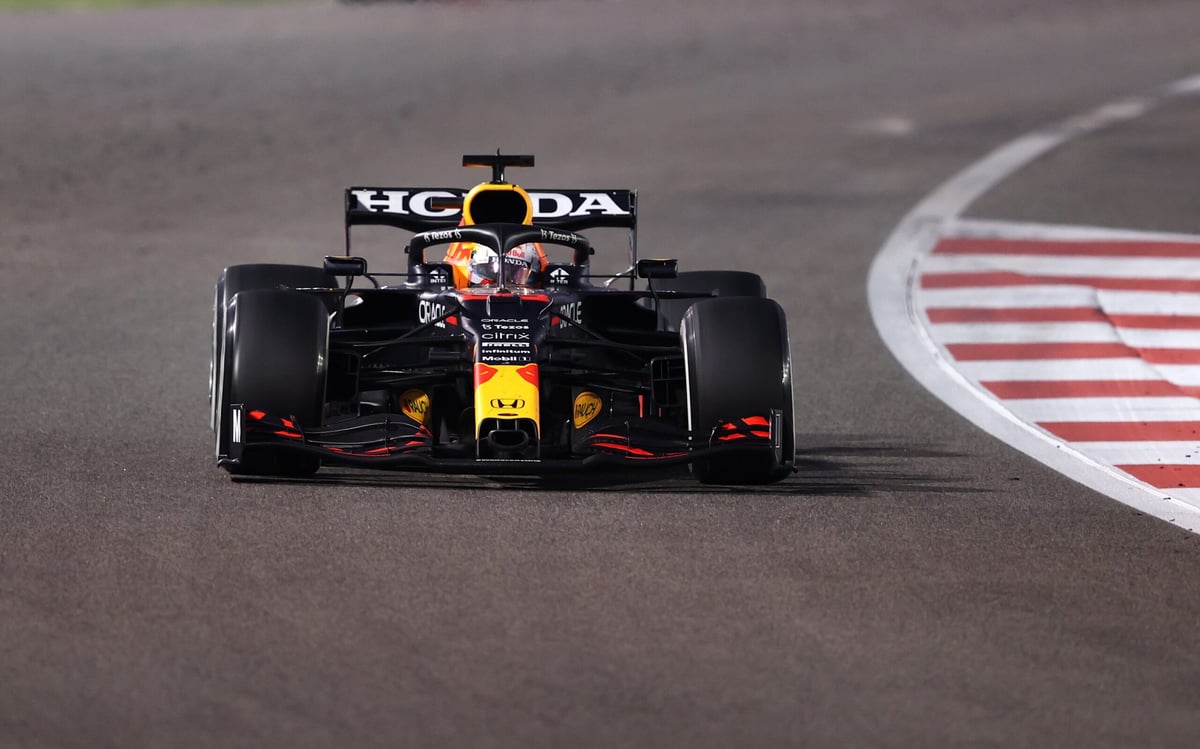Even if you’ve watched a couple of F1 races in your time, you might still be scratching your head about the acronym “DRS”, which is a common talking point for commentators and the source of much excitement during the race. So what is DRS in F1?
Table of contents
What does DRS stand for?
DRS stands for “Drag Reduction System” in Formula 1 and is a racing aid that was first introduced in 2011 to enhance overtaking opportunities during a race. The DRS system allows drivers to temporarily reduce the drag on their cars by adjusting the rear wing flap from a button on their steering wheel, encouraging overtaking through turbulent air and making racing more exciting.

RELATED: “1,000% The Best Thing For Me”: Daniel Ricciardo On Returning To Red Bull
By reducing the drag of the wing flaps, the car can achieve higher straight-line speeds on certain sections of the track, typically longer straights and fast corners. The DRS can be activated on the F1 car steering wheels by when a set of predetermined conditions are met, which are governed by a general set of rules, but ultimately by the director of each race.
The driver-controlled device aims to improve the spectacle and competitiveness of wheel-to-wheel racing in Formula 1 by encouraging closer battles and more overtaking manoeuvres.
How does DRS work?
The Drag Reduction System (DRS) in Formula 1 is a relatively straightforward concept and system in such high-tech racecar engineering but has proven very effective at helping drivers get out of the turbulent or “dirty” air behind the car in front. Depending on the race track, there can be up to three DRS zones (sometimes even four DRS zones), making it an essential part of the racing strategy. Here’s how the rear wing system works:
DRS Zones
Certain track sections are designated as a DRS activation zone. These areas are typically long straightaways (such as a pit straight) where the aerodynamic drag on the car most affects the high speeds reached. By reducing the drag on the car, speed is increased and passing the car in front is easier.
Detection Point
Before each DRS zone, there is a detection point on the track. As the manually activated DRS can only be turned on if the trailing car is less than one second behind the car in front, the detection point measures the gap via electronic timing loops and sends a signal to the trailing car if DRS can be turned on.
Activation
If a car is within one second of the car ahead at the detection point, it becomes eligible to activate the DRS. The driver is typically notified that DRS is activated by the steering wheel or dash lights activating, after which they can manually activate DRS with the push of a button.
Rear Wing Adjustment
When the DRS overtaking aid is activated, the rear wing of the car adjusts to reduce aerodynamic drag, encouraging drivers to race wheel to wheel and giving the fans the overtakes they want. The top flap of the rear wing opens up, effectively decreasing downforce and reducing drag produced by the car and allowing for faster racing across the track surface.
Deactivation
After the specified zone, drivers will disable DRS or it will turn off automatically, typically when the driver applies the brakes or releases the actuator controlling button. With DRS turned off, the car’s critical ability to corner is improved.
It’s important to note that the use of DRS is regulated by the race director of the Grand Prix. The system is primarily intended to enhance overtaking opportunities, and its usage is governed by specific rules to be fair and to keep drivers safe, such as during wet track conditions or if a safety car is deployed.

RELATED: Here’s What Every Formula 1 Driver Is Earning In 2023
What is a Formula 1 DRS zone?
As the name suggests, a DRS zone is a specific section of a race track where drivers are allowed to use the Drag Reduction System. These zones are strategically placed around the race tracks on the calendar to maximize following car overtaking opportunities and the location and number of DRS zones can vary from race to race.
Dictated by the race organizers and the FIA (Fédération Internationale de l’Automobile), DRS zones are generally found where high-speed overtaking is both safe and likely. When there are two cars very close together, the set activation zones are designed to give a slight advantage to the pursuing car over the leading car, facilitating overtaking by creating an ideal overtaking zone.
When can they use it?
Drivers can only use DRS under certain circumstances, and when the FIA race director officials deem it safe. DRS can’t be used during safety car red flag periods, the first two racing laps or when it’s raining on the track, while it must also be within the DRS zone and within one second of the car in front.
If multiple cars are within one second of each other inside the designated activation zones and all activate DRS, it can create what’s known as a “DRS line” or “train” of slipstreaming drivers with the same straight-line speed. Lewis Hamilton once famously joked he was, “Thinking of just taking [his] iPad with [him] in the race and when [he’s] in the DRS line just watch the new Game of Thrones.”

How many DRS zones are there?
The number of DRS zones in an F1 season can vary from race to race and is determined by the race organizers and the FIA. The number and placement of DRS zones are chosen based on the characteristics of each circuit and the potential overtaking opportunities they offer, with each track likely to have two DRS zones.
To determine the specific number of DRS usage zones for each F1 Grand Prix, the FIA and race organizers analyze track layouts, straightaway lengths, and other factors that affect overtaking. Their goal is to add these drag reduction system zones in areas where open rear wings and the added top speed will have the biggest impact on overtaking.
It’s worth mentioning that the placement and effectiveness of DRS zones are continuously reviewed and changed, to make the best and most exciting racing possible.

Does F1 DRS open automatically?
No, the F1 Drag Reduction System does not open automatically and the DRS can only be activated manually by the driver when the conditions are met.
How much of an advantage does DRS give a driver?
The advantage provided by the Drag Reduction System (DRS) in Formula 1 can vary depending on several factors, such as the circuit layout, the cars’ performance, and the specific conditions during a race. While the DRS is intended to enhance overtaking opportunities, the advantage it offers is not overwhelmingly significant on its own.
As the advantage gained may be relatively minor, and successful overtakes still require skilful driving and strategic positioning.
















